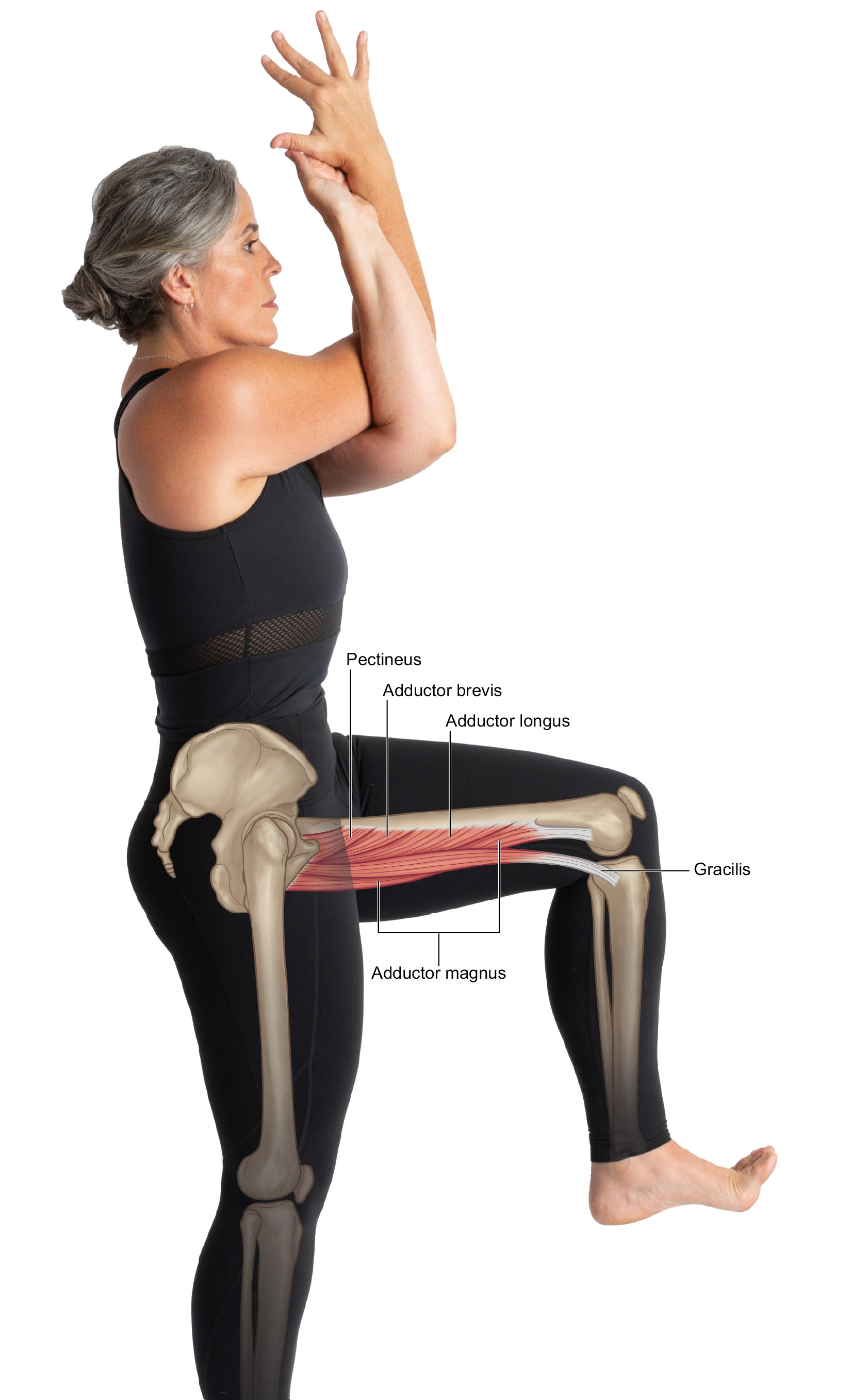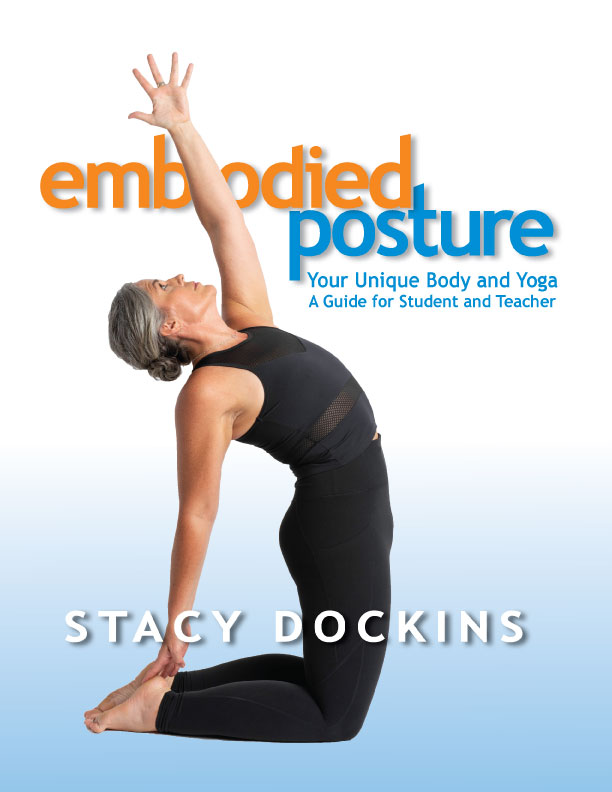Don't Forget Your Hip Adductors in Yoga!
In most fitness formats, the hip extensors and flexors are getting a lot of attention. Everywhere I look, there’s another way to “strengthen the glutes” or to “release the hip flexors.” This is important stuff, but let’s not forget that the hip joint has 360 degrees of possible movement. It is important to practice with an awareness of balanced integrity in the entire joint. We naturally do lots of moving in a front to back plane, including adduction requires us to expand our movements in different directions.
The actions possible at the hip are: flexion, extension, medial rotation, lateral rotation, abduction, and adduction.
The overall tone and balance of the muscle groups that perform these actions together influence the stability and health of not only the hip joint, but also the pelvis, spine, and knee. We could say that the integrity of the hip joints has a profound effect on the entire musculoskeletal symmetry and wellness.
Adduction is one of those actions that can get forgotten about if we don’t intentionally incorporate it into our practices.
The adductor muscles include the Pectineus, Adductor brevis, Adductor longus, Adductor Magnus, and the Gracilis.
Adduction happens when we move the thigh toward or beyond the midline of the body. It’s what you might refer to as “squeezing the inner thighs.” Coming into Garudasana or Eagle pose is an example of hip adduction.
If you look at the adductor muscles here in this image, notice how the Gracilis crosses the hip joint and the knee. It is a 2-joint muscle and it is extremely important for medial stabilization of the knee. It attaches from the pubis to the tibia.
When considering the best ways to keep any joint stable and healthy, keep in mind active and passive ranges of motion. The muscles should be strong enough to provide stability to the joint and not so rigid that they constrict natural motion. Whether you are strengthening or releasing, it is helpful to know that the healthy function of our muscle doesn’t simply reside within the muscle tissue its self, but also within our nervous system. Simply wiring our brains to pay attention to and to remember certain muscles or groups of muscles can help over-ride any subconscious automatic patterns that the muscles have fallen into.
When I’m thinking about balance within my own body, I think of the approach as having 3 facets: 1) strengthening, 2) releasing, and 3) remembering.
Here are some ways to strengthen, release, and remember your adductors in yoga:
Emphasize active squeezing of your thighs together in poses like Eagle.
In asymmetrical standing postures like Warrior 1, Warrior 2, and High Lunge, activate your legs by squeezing toward the midline of your body.
Place a block between your thighs in lots of postures and squeeze! A few options are: Chair pose, Mountain pose, and Bridge or Wheel (occasionally the block between the legs in Bridge or Wheel place the feet at a position that doesn’t not fit for certain bodies).
Place a block between the feet in lots of postures and squeeze! A few options are: Boat pose, Locust pose, and Waterfall.
Practice poses that require you to hold your leg in space in an adducted position. A few options are: Side Plank with the bottom leg extended laterally/ hovering in space, Fallen Triangle with bottom leg hovering laterally, and in Mountain pose with a leg lifted to near parallel to the ground and drawn slightly across the midline of the body.
Practice poses that stimulate and release the adductors as part of your normal “hip-opening” sequence. A few options are: Standing Straddle Fold, Happy Baby, Frog, Half-Moon (standing leg gets a nice adductor release/stretch). Change it up frequently! Remember that hip opening postures go way beyond the Pigeons and outer hip openings.
When doing these releasing poses, remember that a little goes a long way. It is never beneficial to get more and more flexible. Just give the muscles a little remembering, healthy stressing, and release. Rather than thinking in terms of “stretching,” think of giving those tissues a little poking and prodding that will support over-all awareness and healthy function.
Now—it’s important that you don’t all of a sudden over-do your inner thighs! Remember that it is a balancing act and to maintain wellness in a joint, it is a good idea to move in lots of different ways. We don’t EVER arrive at the ideal alignment, we just keep experiencing, exploring, remembering, strengthening, and releasing. In my book, Embodied Posture: Your Unique Body and Yoga you can learn much more on all of the anatomical actions of the hip and how to inform yourself and your practice in a way that works best for you.
Namaste and happy Practicing!
Stacy Dockins
Author of Embodied Posture: Your Unique Body and Yoga—now available for purchase in paperback or Kindle on Amazon!

